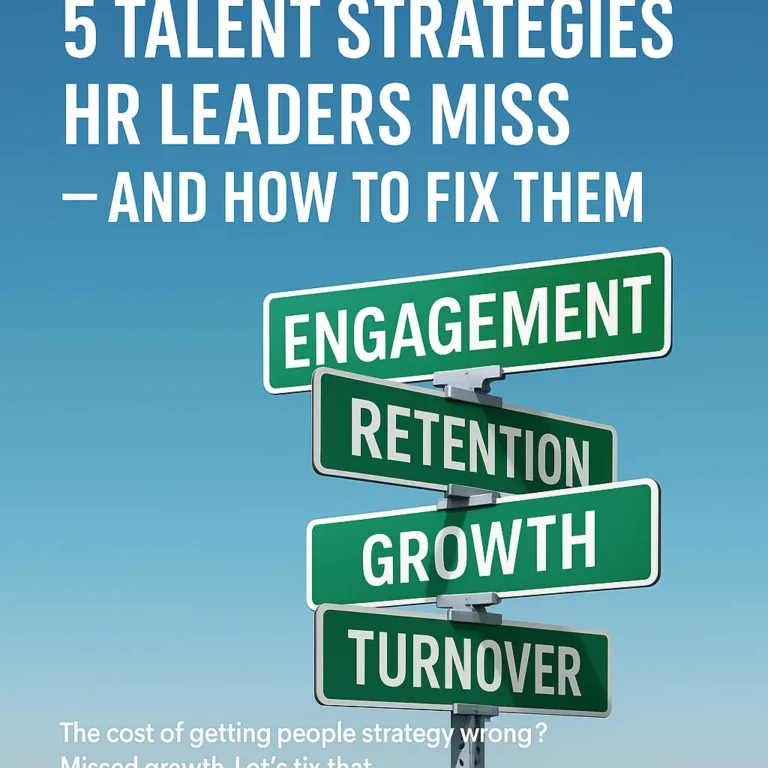Overview of Organizational Development
Most people use the terms “organizational development” and “human resources” interchangeably. However, there are some notable differences between what an organizational development professional does on a regular basis and what an HR professional does on a regular basis.
If you think about your standard HR personnel, they’re responsible for recruiting and hiring, getting folks oriented to the organization, perhaps some on-the-job skills training, and certainly for managing every other part of the employment process, including pay, raises, discipline, terminations, and compliance.
An HR professional’s job is important, but it’s really one of maintaining the status quo of the organization. In other words, the organization has a goal in mind and it’s HR’s job to make sure that things are moving toward that goal.
Organizational development professionals, on the other hand, are more concerned about the health of the organization, so they’re not guiding the organization to a specific goal. Rather, they’re helping to set the goals of where the organization is going and, even more importantly, putting things in place to ensure the organization can meet those goals.
Organizational development professionals monitor the culture of the organization to be sure the culture is marrying up with the organization’s brand, mission and values.
If you think about it in medical terms, you might think of an HR professional as being the family doctor or general practitioner, whereas the organizational development professional is more the high-level specialist you go to for specific ailments. The reason it’s important to understand that distinction is because you have to know what to expect from your HR function based on where your company is struggling right now.
I’m always amazed when I go to HR-related conferences to find the sessions on HR trends, legal updates and accounting for the HR professional always jam-packed. To be clear, HR professionals do need to stay up-to-date on the latest compliance regulations, understand profit and loss statements, and they’re certainly wise to learn about the trends in HR.
But what’s disappointing is your average HR professionals don’t take the time to develop themselves. They’re not taking the time to work on their own skill sets in terms of their managerial ability and leadership skills. This is the defining difference between HR and organizational development. An organizational development professional is viewed as a leader in the organization, is invited to the table and is often relied upon by others in the C-suite to help develop them.
The Importance of Organizational Culture to Organizational Development
If you agree with my above definitions, it’s obvious that organizations need HR. In my work with hundreds of clients, the biggest complaints I hear from the C-suite are that the HR function isn’t strategic, doesn’t think ahead, and they keep the wheel going, but have no new ideas on where to take the organization.
That’s what an organizational development professional is tasked with – keeping a finger on the heartbeat of what’s going on in the organization and being a champion of culture in the workplace.
An organizational development professional is one who is constantly asking why things are the way they are. Why is the culture what it is right now? Is it supporting our mission? Why is our mission and vision what it is? Does it accurately reflect where we’re going as an organization? Do we have the right people with the right skill sets in the organization to meet our mission statement? If not, what are we going to do to change that?
The biggest challenge for someone working on organizational development is marrying up the culture to the employment brand and to the mission, vision and values of the organization. In a nutshell, that’s what the organizational development professional is tasked with.
When the culture doesn’t meet where the organization is going, that’s often where I see organizations reaching out for help. They’ll tell me that HR can’t meet their needs. Typically, I find that it’s really about no one in HR stepping back from focusing on the daily running of the business to say, “What are we doing from a culture standpoint?”
The sad thing is, when I ask that question to the average HR professionals, they tell me they have pizza Fridays or doughnut Wednesdays, or an annual picnic. Those things do not represent culture and do not drive your culture.
What is organizational culture?
Culture happens every single day in your organization. It is how people are treated, their opportunities for growth, and their relationship with their coworkers, management and even the C-suite and owners. It’s what the employment brand is and whether or not it matches up with the marketing brand. These are the in-depth topics you have to explore when it comes to your culture.
I’ve had business owners tell me, “We have an open door policy, that’s our culture.” Nope. That’s a policy, and it’s a good one, but if no one trusts management, then it doesn’t matter whether the door is open or closed, so let’s not confuse policy with culture.
Culture is the set of norms in the organization around which you govern behavior. Culture in a business is not unlike how society has norms for behavior and families have norms for what’s expected around traditions, whether that be holidays, faith beliefs, or regular family gatherings. Businesses have those behavioral norms as well and that’s where your culture comes from.
I can address how to change culture another time, but it is the role of the organizational development professional to keep a finger on the pulse of that culture, knowing if it’s where it needs to be and what the organization is doing to maintain that culture.
There are six things you can look at that would really drive culture change. I’ll be sharing those six guides for creating real culture change next time. In the meantime, reply/comment below and let me know: What are the culture struggles in your organization?


